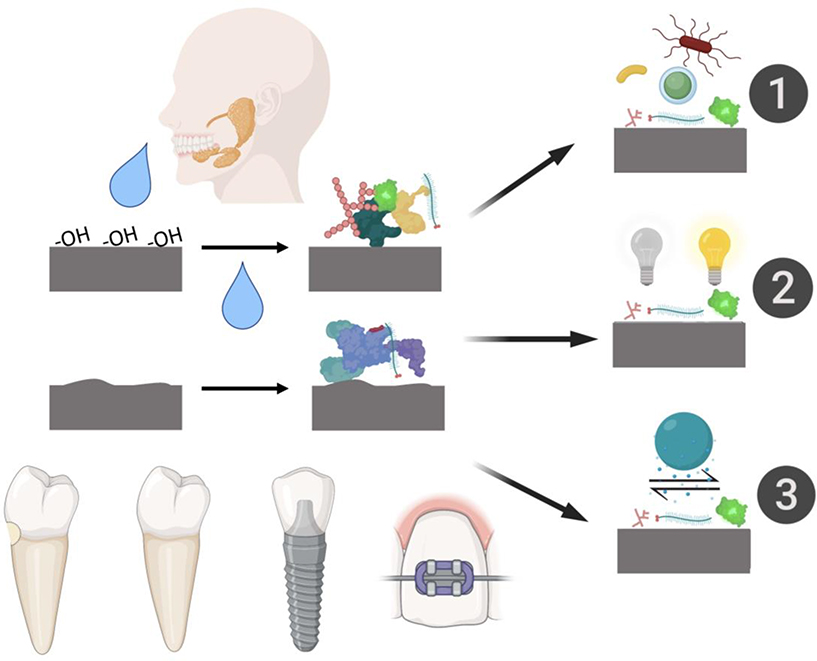Figure 1:
Schematic overview of dental biomaterial surface properties that can lead to differences in salivary pellicle formation and the resultant dental biomaterials outcomes this may drive. 1) Salivary pellicle composition can drive differences in biofilm bacterial content and activity. 2) Salivary pellicle formation can stain dental biomaterials. 3) Salivary pellicles can affect tribological properties and wear of dental biomaterials.

